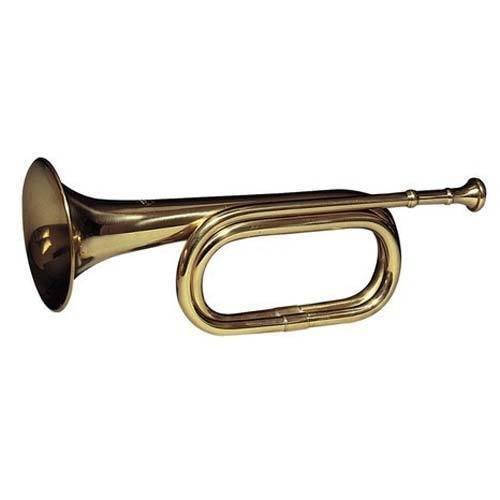Brass instruments or labrosones are musical instruments that create sound with the help of lip vibrations and exert air from the mouths of the player. The word labrosone means lip vibrated instrument which is basically what brass instruments are all about. Brass instruments have a tubular resonator that helps to amplify the sound emitting vibrations which fall into our ears as the final result.
Brass is basically an alloy that is yellow in color. But instruments that are today categorized as brass instruments were previously made out of a range of materials starting from animal skin, horn, and shells. An example of this is the bagpipe which is very familiar amongst people of Scottish origins. Nowadays on the contrary new synthetic materials like fiberglass have become quite common for brass instruments. This is one of the reasons brass instruments are rarely referred to in such a manner and they are rather identified by the purpose or the type of sound they emit instead.
Variations In The Sound Of Brass Instruments
Brass instruments come in different shapes and sizes and they can greatly vary when it comes to pitch and tone. The difference in the sound emitted by these instruments is determined by the type of tubing involved in making the instrument. Other minor elements go into the making of these instruments that distinguish them from one another in some way or the other. The valves and crooks are strategically manipulated by makers when they need the instrument to emit a particular type of sound.
However, there is a lot that depends on the player’s ability to handle the brass instruments as well. Brass instruments are not very easy to play smoothly and more often than not it requires a skilled player to make the most out of the instrument. Brass instrument feeds of the vibrations of the lips that the player omits and this can be a bit tricky to pin down for people new to these types of instruments.
Types Of Brass Instruments
There is a range of brass instruments that are both played by people as a hobby or as a part of a larger orchestra ensemble. Let us get familiar with some of these instruments.
Bugle
It is considered the simplest of brass instruments as there are no such valves that are placed in order to manipulate the sound emitted from the instrument. However, because of the rather straightforward design of this instrument, it is limited in its capability to hit a range of notes and can only manage to hit 5 different notes. The range of scale of the bugle is known as the bugle scale. Bugle is closest to the earliest forms of brass instruments that were made from horns of animals. It is said so because of the minimal amount of structuring that goes into the making of a bugle in comparison to other brass instruments.

Trumpet
The bugle was something that was initially inspired by the musical instruments that were made from products acquired from nature such as the horn of an animal. The trumpet on the other hand was created from an extension intended to make the bugle have more range as a musical instrument. This is primarily done with the use of valves and also by playing with the length of the tubing in a bugle. Trumpets have a wide range within themselves and there are a lot of trumpets out there that differ from each other in the build which also leads to the different sounds emitted when played. Trumpets are fairly common in jazz and classical music.
Cornet
Cornet is one of the smallest brass instruments out there. Cornets have a reputation to be hard to master with ease. The difficulty in playing the instrument is generally attributed to the v-shaped mouthpiece which makes it more challenging to emit clear vibrations. It differs from the trumpet when it comes to shape and sound. It has a conical bore and this makes it very suitable to produce sounds that are rich in tone and are smooth to the ears. The disadvantage of such a refined sound is that it is not capable of hitting higher notes effectively.
Flugelhorn
The flugelhorn may appear very similar to the bugle but the major difference it has is the valve that it is endowed with. For this reason, it is also widely known as the valved bugle. One of the main differences of the flugelhorn is its inner bore. Compared to the bugle or the cornet, the inner bore of the flugelhorn allows for greater air consumption which gives it a deeper tone than the other two. The conical bore in the flugelhorn is slightly wider than the trumpet while the tubes they both possess are of the same length.
French Horn
The French horn is a rather unique instrument when compared to the instruments that we already discussed. It has a long tube that is coiled up and it ultimately expands into a wide bell. The French horn is a specialized instrument, and therefore the players who play the instrument are identified as hornists. The french horn is a rather complicated piece of the instrument with many variables that determine how its sound plays out.
The type of sound emitted is first and foremost determined by the force of exertion and the quality of vibration that the player produces. The tubing in a french horn is formed in a certain way that when the player exerts their force into the instrument in a certain manner, the air passes through a different passageway which enables greater variety for the player.
These are some of the most common brass instruments out there. There are a lot of other brass instruments that are played all around the world and all of them have variations in the manner that they are built or utilized by players. They are usually recognized as the staple instruments of an opera but they do have a lot of interesting facts to offer for the curious mind who want to know more about the mechanisms that manipulate sound to create beautiful music.

